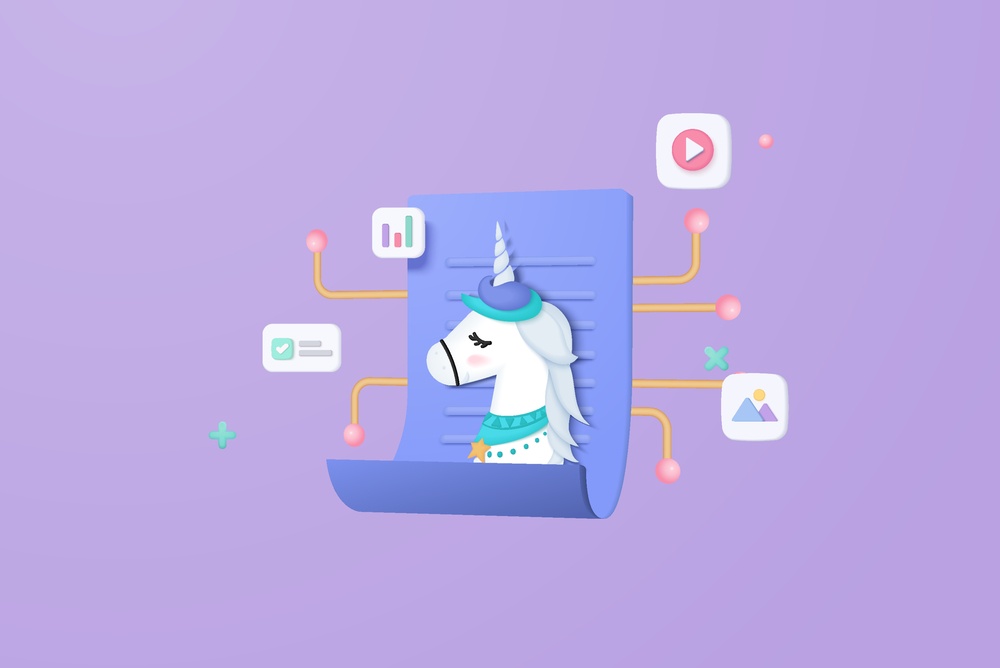
When you’re flipping something you’re basically reselling it; plain and simple. An NFT is purchased at one price and then resold for another, higher price. That’s all there is to flipping NFTs. Getting it done and being profitable is where the challenge arises.
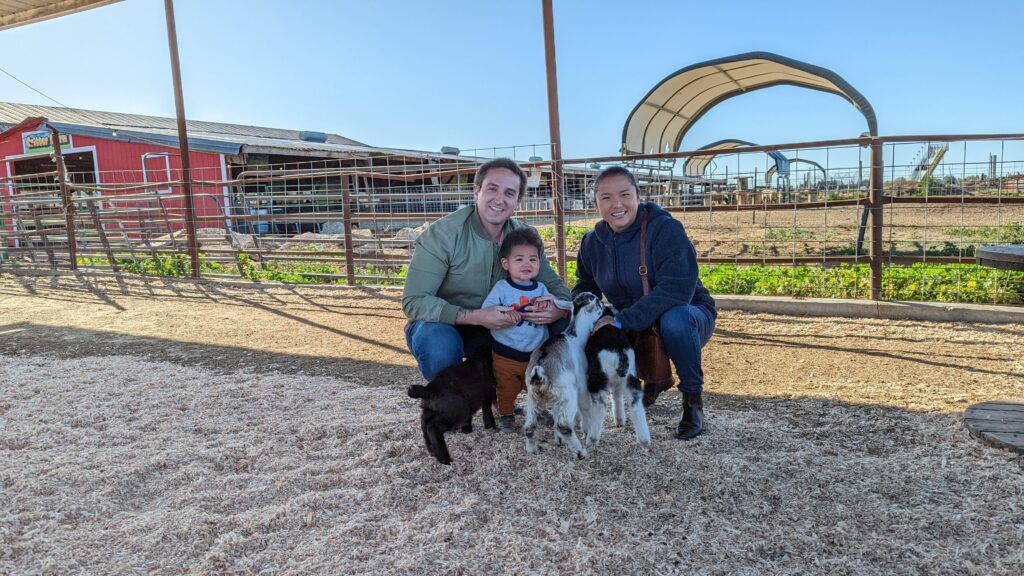
Are You Ready To Work Your Ass Off to Earn Your Lifestyle?
Are you tired of the daily grind? With a laptop and an internet connection I built a small website to generate income, and my life completely changed. Let me show you exactly how I’ve been doing it for more than 13 years.
Technically speaking, buying and reselling NFTs is pretty easy. The main sticking point for successfully flipping NFTs is the research phase. You have to buy something for less than its worth, then sell it for its real value. Telling the difference is key. The research process can be as intensive as you want it to be and take a lot of time if you want.
The more research you put into your NFT flips the better chance you have at actually pulling them off. The more time you spend learning about what makes a successful NFT project and studying the ones you’re interested in the better your chances are of making money.
As with most things crypto you have to lay down an investment before you’re going to start seeing a profit. For flipping NFTs time is a major component; think of it like time equals success. This is the case for most investing as well so seasoned investors are going to have an advantage here.
This article is going to take a look at the technical aspects of NFT flipping first. That part is pretty mechanical. It doesn’t take the same level of thought and attention as the research phase does.
Once you’ve learned about the basic mechanics of NFT flipping, we’ll dive into the research phase. This is the guts of NFT flipping and could probably have several articles devoted to going into the deep details. We’ll take a look at the large picture and leave you with some advanced tools and resources to explore on your own.
The one main piece of advice I would give new people getting into flipping NFTs is to take your time. Don’t expect to get rich overnight and always double-check the URLs and addresses to make sure you’re dealing with authentic NFT projects.
6-Step NFT Flipping Basics (Step By Step)
1. Get A Crypto Wallet
To flip NFTs you must first buy them. This starts with getting a crypto wallet of some type. There are marketplaces that completely circumvent the need for a crypto wallet when purchasing NFTs as well, but it’s not the norm. One of the most popular ones is MetaMask.
Each NFT project is typically associated with a blockchain. For example NBA TopShots and FanFare.FM use the FLOW blockchain. It uses the Blocto wallet which is very easy to use and connects directly to a credit card. Other NFT projects such as CryptoPunks are on different blockchains that use different cryptocurrencies, such as Ethereum (ETH).
At this point in time, NFTs are minted (in NFT lingo mint and create are synonymous) on one blockchain and stay on it for the entire duration of their existence. A music NFT that is created, bought, and sold from FanFare.FM will remain on the FLOW blockchain and an Ethereum-based NFT purchased from OpenSea will forever stay on the ETH blockchain. Work is being done to bridge NFTs from one blockchain to another but it’s not a mainstream, common or standard option at this time.
There are options to buy crypto directly on OpenSea and other platforms. This can bypass the need to install and set up MetaMask. The crypto that you purchase will essentially by stored in a wallet on the NFT platform you purchased it on. NFTs can be purchased with the crypto in your wallet on the NFT platform.
The following guide should help you install the MetaMask Wallet extension in your web browser and the mobile application on your smartphone. If you’ve never installed anything like MetaMask before it can be a little intimidating. Just go slow, read the instructions and follow them carefully; you’ll be fine. In light of the recent hack, I recommend that you disable your iCloud backups or any cloud backups for your MetaMask password.
Avoid Scams By Always Double Checking Everything
One of the most important things to always ensure with crypto and NFTs is the authenticity of the apps you install and websites you visit and connect to. The best way to do this is always to take a moment to look at the URL, website address, company names, and all other identifying information is valid. An upper-case “i” can look like a lower case “l” in many cases, or a zero can look like an “O” when you aren’t paying attention.
2. Fund Your Crypto Wallet
Before you dive in it’s important that you read through this entire article. There are different cryptocurrencies associated with different NFT projects. Some use SOL, others use ETH, some use Cardano while others like Nifty Gateway use fiat on the surface; you’ll need the right currency for the NFT you want to buy and flip.
Once you’ve got fiat across the crypto bridge it’s not that difficult to swap from one coin to another. If it wasn’t obvious yet, swapping money easily without banks is one of the main advantages of crypto. The different entries and bridges to crypto from fiat can have differing levels of fees and expenses depending on the cryptocurrency you buy.
OpenSea is one of the most popular and used NFT marketplaces and the primary cryptocurrency used for NFTs on it is ETH. That may be the crypto you decide to purchase for buying and flipping NFTs. Here is a resource for funding MetaMask Wallet, for now, continue reading and come back here later to do the actual funding.
3. Connect Your Crypto Wallet to NFT Platform
To flip an NFT you must first purchase and own it. There’s no way to know for sure how much you’ll be able to sell it for, though you should have a target price in mind after doing your research. Both buying and selling of NFTs happen on crypto platforms and marketplaces. The platform is what you’ll connect the crypto wallet to in order to make transactions.
Connecting a crypto wallet to a platform is usually pretty straightforward. One of the important aspects of this step, as with all steps, is making sure you’re connecting to the authentic platform. Tricking unsuspecting people into making connections to fake NFT platforms is a common approach used by thieves.
The easiest way to ensure you’re connecting to the real site is to look at the location bar in your web browser. The URL or website address should match the authentic resource that’s being connected. For example, for OpenSea the URL needs to be exactly https://opensea.io/
After clicking the button to connect there will also be another window displayed with additional information about the connection. Read through the message to ensure that you’re connecting to the authentic resource. Most of the time if you’ve ensured the URL is correct everything will work appropriately, it’s always a good idea to double-check everything in the crypto world though.
4. Locate An NFT to Purchase
It’s generally not very difficult to find NFT to buy, but it is a step in the process. If you’re using OpenSea then the easiest way to find the NFT is to simply search for it by name. You can also explore alternative marketplaces, but for new buyers, my advice is to stick with general mainstream stuff before you get too crazy with niche arbitrage. Walk before you run, you know?
You’ll need to find the exact NFT you’re wanting to buy once you’ve located a project you’re interested in. Remember, a single project like Bored Apes or Axie Infinity could have 10,000 different NFTs to choose from. A single bored ape could cost you $100,000+, so most people will only be able to invest in one. Smaller projects could have much cheaper NFTs where you could buy a series of 100 or more NFTs from a project, but as with most marketplaces anywhere in the world, the profit from cheaper items will be smaller too. Would you rather make $10 profit from 100 NFTs each, or $1,000 profit from 1 NFT? This is a question you’ll have to answer for yourself.
During the research phase, it’s a good idea to make note of the URLs to each NFT you’re interested in buying. That will save time for when you’re ready to pull the trigger and make the purchase.
Either use the search tools to refine your search or manually browse through the NFTs in the project until you find the one you want to buy. If you have the URL enter it into the address bar of the web browser and hit Enter. At this point, you’re ready to buy the NFT.
5. Purchase Your NFT
With the wallet connected and the NFT in the web browser, it’s time to buy the NFT. Sales for NFTs can happen in a few ways. The primary method is to just straight out buy the NFT. Another option is to make an offer on the NFT.
Another method exists for NFT sales that are similar to an eBay auctions as well. These styles of NFT sales are just auctions. The highest bidder will become the owner of the NFT when the auction and bidding have ended.
Whitelists are another means of buying NFTs. For new NFT projects, there will be what’s called a whitelist that is a pre-selected group of people who are permitted to buy (or mint) and NFT upon release.
In the most basic scenario, you’ll simply be buying a pre-selected and researched NFT that you have the URL for on OpenSea. When you’re ready to make the purchase just click the Buy button. You’ll be presented with a few windows confirming the purchase, so long as you’ve checked that you’re connected to the correct place click OK.
If you take the route of making an offer, the steps are similar. In that scenario, you enter the amount that you would like to pay for the NFT., then the seller will be notified that you’ve made the offer.
If the seller accepts the offer that you’ve proposed they will approve the transaction. This will initiate the sale notifying you as well. At that point, you can approve the transaction and you’ll be the new owner of the NFT.
The deep details of whitelists and auctions are beyond the scope of this article, though the overall, fundamental technicalities are the same, more or less. Whitelists are where the more advanced side of NFT flipping begins; we’ll touch on that a little bit in the research section.
6. List The NFT for Sale
To do the full NFT flip you’ll need to sell the NFT that you’ve purchased. If there is no interest and no one to buy the NFT, then there will be no flip; you could be left holding the bag. “Bag holding” is a phrase commonly used in the crypto and NFT world because it happens so common, and you should be aware of this dynamic in the NFT space in general. Many projects are created simply to pump and dump on inexperienced investors, and more people lose money than make money in this space.
Even worse than having heavy bags is getting rug-pulled. This means that a project simply takes your money and disappears. Getting rugged is seen as simply part of the crypto game, so just be aware of it. If someone sells you a shitty NFT and you can’t sell it because nobody wants to buy it or because the founders disappear and don’t deliver on their roadmap, there will be nobody to be held accountable other than yourself.
NFT Market Conditions 2022
There’s a saying in the real estate flipping community that you make your money on the day you buy it. The same is likely true with NFTs, though there can be unexpected results in some cases. The price you set to resell the NFT will be determined in the research phase. If you have done good research, then your NFT should sell for a higher price after some time… assuming bull market conditions.
This is another HUGE caveat to consider when flipping NFTs. What are the market conditions?
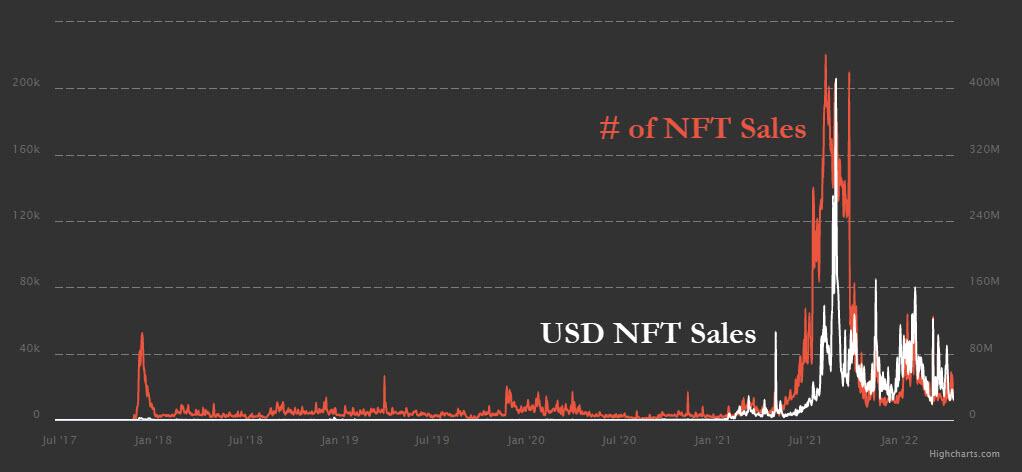
Right now, it seems as though the bubble has popped. Personally, I did a few flips and lost money in 2020, as I saw the bubble for what it was. I couldn’t find the right projects. I couldn’t afford the obvious wins like BAYC. Things got crazy in 2021 and as of 2022, it looks like the craze is over. The market is saturated. People are losing money.
Nobody really knows what’s going to happen. All markets are sluggish right now because of global events and the cost of capital rising (interest rates going up), so even “safe” digital assets like Bitcoin are down about 40%.
Of course, every market always has opportunities if you do the right research and flip the right products, but you should definitely be aware of broader macro conditions as you invest.
NFT Project Research & Due Diligence (IMPORTANT!)
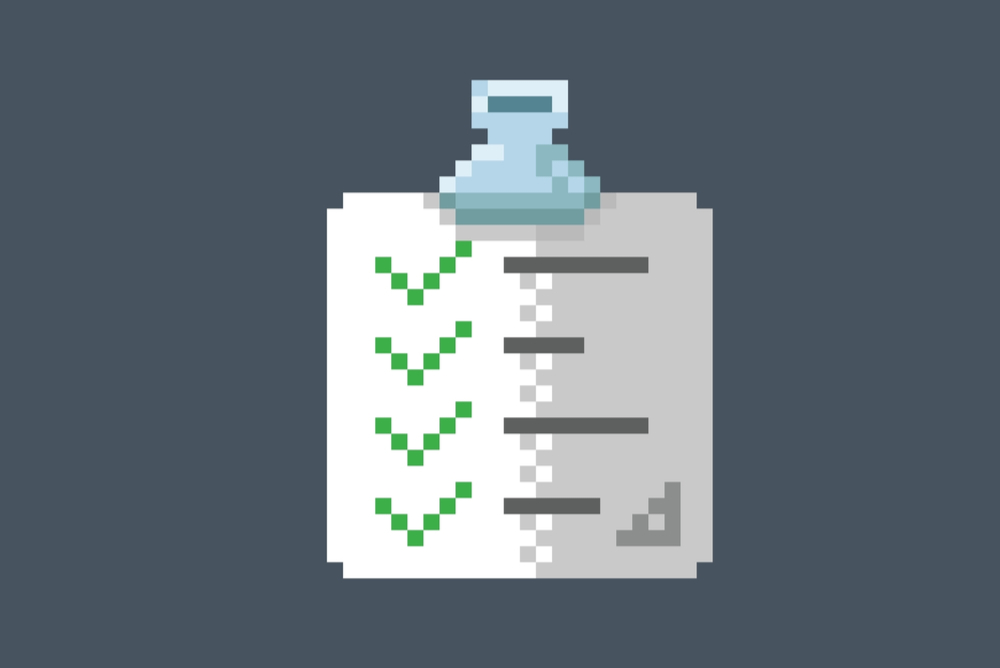
As you get started in investing and flipping NFTs, here is my recommended checklist of what to do as part of your research process.
Learn The Terminology
In an effort to save time and confusion in the middle of research it’s best to set aside some dedicated time to learn crypto and NFT terminology. It could be something you’re already familiar with and that’s fine. There are many resources available online to help but the important part is to understand what you’re doing essentially.
Create A Discord Account & Join Some Groups
One of the best ways to learn about NFTs in general and specific projects is through Discord. To use it you’ll need to create an account. This is relatively straightforward and mirrors most other accounts setup processes you’ve probably already followed in the past.
Each NFT project should have a Discord group. If you find an NFT project that doesn’t have a Discord, or at least Telegram, group it might be one to avoid. Unless there’s a really good reason that ties into the theme of the NFT project or something along those lines having no Discord is a red flag.
In addition to joining the NFT Discord groups for the individual NFT projects, you’re interested in researching there are also more general-purpose groups. These groups are often filled with others who are interested in flipping NFTs. They can be useful however there are many fake ones so again be extremely cautious.
What you’ll want to look for in an NFT projects Discord is the sense of community and excitement around the project. Also, how well is the Discord designed? What are the channels, etc.?
If you’re not sure what a good NFT project Discord looks like check out Friends of Gary Vee. Also look at a few other really popular NFT projects like CryptoPunks, AxieInfinity, or the ape-based projects. That should give you an idea of what a thriving, existing and successful NFT project looks like.
Utilize Twitter For NFT Research
Twitter, like Discord, is a mainstay for the crypto and NFT world. If you don’t already have a Twitter account, create one. There isn’t a need for you to utilize it to promote anything if you don’t wish to go that route.
It will be useful to have a Twitter account for research purposes though. You can favorite different tweets about various NFT projects as you find them. You can create Twitter lists of projects you’re interested in following, and there are many other things you’ll be able to do with the account to help.
In general, is where a lot of breaking crypto information is first seen. So it’s a good idea to utilize the platform for NFT research. The more you get involved with Twitter and the NFT community the more chance you have at connecting with new, exciting, and potentially undiscovered projects.
Beyond drilling down into specific NFT Twitter accounts it’s a good idea to check the overall sentiment of Twitter for the project. Use the Twitter search tools and start looking around at the results when you search for the project name.
What are people saying about the project? Are there any tweets outside of the main account about the project? These are both things to look at the judge the popularity of the NFT project and the attitude towards it.
In the same fashion that NFT projects should and do have Discord communities built for them, Twitter should match. Each NFT project should have an active Twitter account with at least daily posts. The account should have a healthy follower account, above one thousand preferably.
Read through the posts from the Twitter account and also check the engagement of the tweets. Are they being liked and shared? Are people asking questions and showing interest in the tweets?
If you find a dead Twitter account with a low follower count and no engagement it could definitely be a huge red flag. This is similar to the Discord piece as well where you’ll want to study existing successful NFT projects to understand what to look for in their Twitter account.
The basics you want to see are followers, engagement, meaningful and useful tweets. What is the tone of the author of the tweets? Does it match the vision of the NFT project?
Research NFT Project Founders
Some NFT projects are based on the team being completely anonymous. Some cryptocurrencies are the same way. These projects can often be nefarious rugpulls, fakes, scams that will result in you losing your investment.
Many NFT projects now choose to reveal the identities of major stakeholders, developers, artists, and others involved. In the early days of NFTs, and still now to a degree, the aspect of mystery around NFT projects was part of their appeal.
Several promising and major, high-dollar NFT projects ended up being rugpulls resulting in major losses for people. That’s part of the reason new and some existing NFT projects are now exposing their teams.
If you’re investing, let’s say, a cool million into something it’s nice to know who the people are behind that something. In the case of a business, for instance, I don’t know ANY investors who would drop a milli into a new, unheard of business and not know a single person’s name who was taking their money.
Tracking down the info for the founders, investors, developers, and artists for NFT projects can be straightforward. That’s definitely not always the case though. Tapping into the NFT project’s Discord is usually a good start if the info isn’t available on the project’s website.
The main point is finding out what you can about the people involved with an NFT project. Have they done anything like this before? Do they have any background and experience with tech or finance? Celebrity endorsements don’t count because celebrities are often just paid shills. Do you think Jimmy Fallon actually gives a shit about owning a bored ape? No way. He was probably paid to promote it on his show.
Study the successful NFT projects founders and teams. What patterns can you spot across the projects and people involved?
Once you start finding patterns of success, use that information to create a list of questions to ask about the people involved in the NFT project you’re looking into. One example to help clarify here is Mark Cuban is involved with Axie Infinity. Mark Cuban has a track record of success with tech, and business, but then again, he’s kind of an idiot because he invests in garbage DeFi protocols yielding a scammy 500% annually (or something like that), yet ignores the incredible potential of bitcoin.
Again, celebrities, whether they are legitimate investors or not, should not be trusted as authority figures in the space.
OpenSea Research For NFT Projects
Using the search tools on OpenSea and other NFT marketplaces itself is a great way to start finding NFTs. Utilizing the sorting and filtering features is key. A good simple thing to do is start showing projects that only have offers on them.
Once you’ve found NFTs with offers on them you can start exploring the projects they’re from. Start really looking at individual NFTs.
- How many NFT mints are there in this project?
- How old is the project?
- How many times have they been bought and sold?
- How many favorites do they have?
- What’s the floor price of a project?
- How have prices changed over time?
Something of utmost importance at this stage is keeping your eyes open for fake projects. Never forget the saying if something is too good to be true, it is. If you think you found an NFT that should be selling for way more than it is and it’s a popular project, you just found a fake. Remember that NFTs are just a receipt for an image, not the actual image. You can upload image copies to websites and mint new NFTs from the same image. Places like OpenSea and other platforms work to combat this, but their algorithms are not fool-proof. This is very common in the NFT space and you have to be extremely careful.
Another of the most common tricks in the NFT space is “wash trading”, where you create multiple accounts to create fake volume buying and selling your NFT to yourself until you hook an unsuspecting victim.
Existing Projects vs New Projects
For the most part, this article has discussed existing NFT projects. These are existing entities that have a history associated with them. They have a trail of data that is researchable.
A good percentage of flipping NFTs will fall into this space; at least at the more basic level. Like all things, especially tech, NFT flipping is a very deep rabbit hole. The next step into the world of NFTs and flipping is brand new projects that have not been released into the world yet.
These are NFT projects that nobody owns any of yet. When the NFT is released, it’s somewhat similar to an IPO (Initial Public Offering) for a company in the business world.
Of course, buying NFTs without a price history comes with more risk, and a potential for more reward. A cheap NFT (or couple of NFTs) you picked up at the initial sale price could 1000x over the next couple months. Or they could sell for pennies on the dollar.
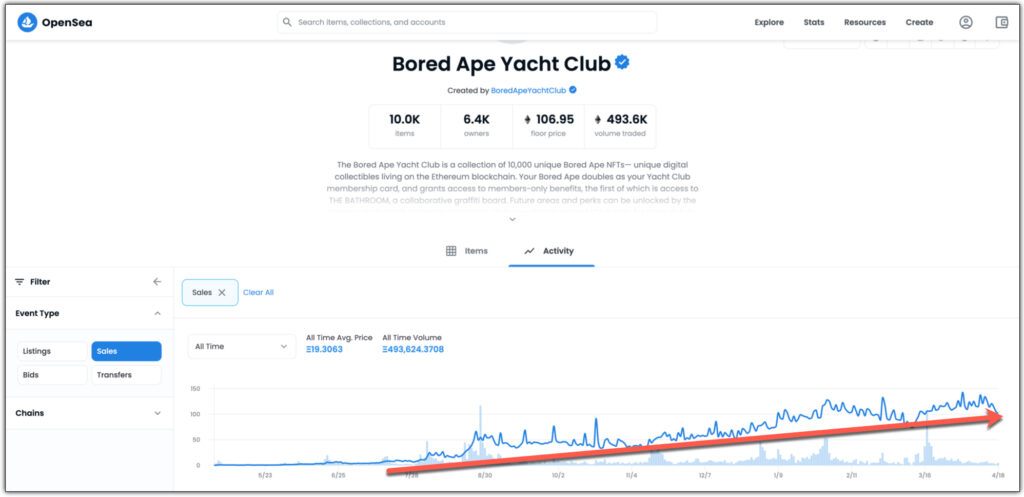
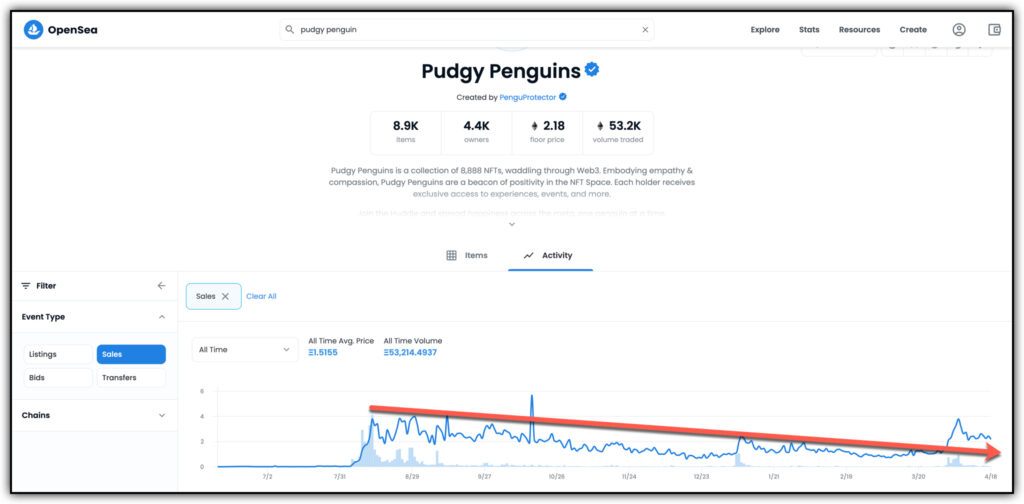
These days, it’s safe to assume that if you aren’t an “insider”, then it’s totally random whether a project takes off or not. You may have some special insight into what sells in the NFT space after a year or more of research, but as a newbie, I would not expect that you’ll have some superpower of guessing which NFT project will moon next. Quality of art is not an indicator of high sale price. Just look at Gary V’s horrible drawings and how much they sells for.
During the release of an NFT project, many of them will have something known as a reveal. This is where the artwork for the NFT people have bought becomes visible to the world for the first time. When you initially buy, or mint, the NFT you don’t know what artwork you’re going to get.
This factor is quite different from existing NFT projects where you can see what you’re buying. It’s similar to trading cards for sports or role-playing games. Some NFT projects actually lean heavily into that concept and almost all of them have a rarity of individual NFTs calculated in some way.
NFT Project Whitelists
As mentioned a few times already, a whitelist is a collection of people who will be permitted to buy or mint an NFT the day it is released or even before. Most of the time the way to get added to a whitelist is through the NFT projects Discord group.
Some of them have requirements for getting added to the whitelist. In general, it’s good to be early if you want an opportunity to buy some of the more hot NFTs. Sometimes whitelists fill up in a matter of days, even hours. Popularity is not necessarily a guarantee of success, but it can give you an idea of how fast something could re-sell, at least initially.
This was my experience flipping NFTs in the short period I did it. An NFT project would sell out, then items would immediately flip for higher prices for a couple hours after the initial drop, then reselling activity would drop precipitously and eventually stop (for most projects).
The technical piece is you provide your wallet address to the NFT project stakeholders. Again, this is usually managed through Discord. They’ll add your wallet address to the smart contract and ONLY those wallet addresses will be permitted to mint NFTs.
Minting NFTs
When you talk about buying an NFT it usually means on the secondary market, like OpenSea. Buying is usually associated with existing NFT projects with revealed NFTs. Minting on the other hand means buying a brand new, fresh one that no one has ever owned.
Minting NFTs is generally going to be done for brand new projects and through what’s called a minting website. There are other ways to mint NFTs but the standard, and what you’d expect to see from a solid project, would be a great minting website. The branding for the website, social media and NFTs should all match and be well designed.
Other Social Media
Twitter is a great place and maybe one of the main places to learn about NFTs and discover new projects. TikTok is another really great source of information and a place to discover NFT projects. Check the NFT project on TikTok and see if they have an account.
Also search TikTok the same way you’d search Twitter to find what people are saying about the NFT project you’re interested in investing in. Have people posted videos with good or bad information? Are there any videos or people talking about the NFT project at all?
Another really great way to find new NFT projects is to “Just Google it!” However, rather than relying on the standard search results the advertisers want us to see, use the advanced search features.
One of the most powerful ways to use Google, especially to find information about something as new as NFTs, is to limit the search results by time. You can limit the results to year, month, day, and twenty-four hours. This is one of the most powerful tools you have for free.
NFT Rarity Tools
Several websites and tools exist to help identify the rarity traits of individual NFTs from a collection. It’s generally a good idea to dig into an NFT project enough to understand what makes a rare NFT. This will involve the way the NFTs artwork was created when minted.
The rarity of an individual NFT can really make a huge impact on the price. So again, understanding the specific attributes associated with each NFT project is pretty important. This information is usually available from the NFT project’s documentation itself.
Beyond the documentation and any information available regarding rarity that is in the projects Discord specific rarity tools can also be utilized. There are several free rarity tools on the web and also some extremely powerful rarity inspection applications linked to later in the article.
Rarity is very real and a crucial aspect of many NFT projects. Look for tools provided by the NFT project itself first, often available in the Discord. The attributes that create the rarity aspects of NFTs are usually listed on the NFT project’s websites. It’s generally important to read through this information and understand how it pertains to your NFT or one you’re thinking about buying.
An example of “rarity” could be how often traits appear in a series of projects, and how often they are combined. For example, a red hat may only appear ten times in a series of 10,000, making it very rare, versus a blue hat which appears 600 times, which is much less rare. A blue had with a gold strip may appear only a few times, but a red had with a gold strip only appears once in the entire series.
When searching for NFT tools always look for other users that you can talk to for information regarding the product. They can be found in the Discord for the particular NFT tool. This can help validate the tool and ensure you’re dealing with authentic rarity processing and information.
NFT Project Floor Price
The floor price is an important aspect of an NFT project to pay attention to, especially historically for existing NFT projects. This will be a calculated price of the lowest NFT in the entire collection that’s been sold recently. This can give an indication of the value of the entire project vs maybe one weird NFT that went viral and sold for a huge sum.
Calculating ROI For NFT Flips (Profit)
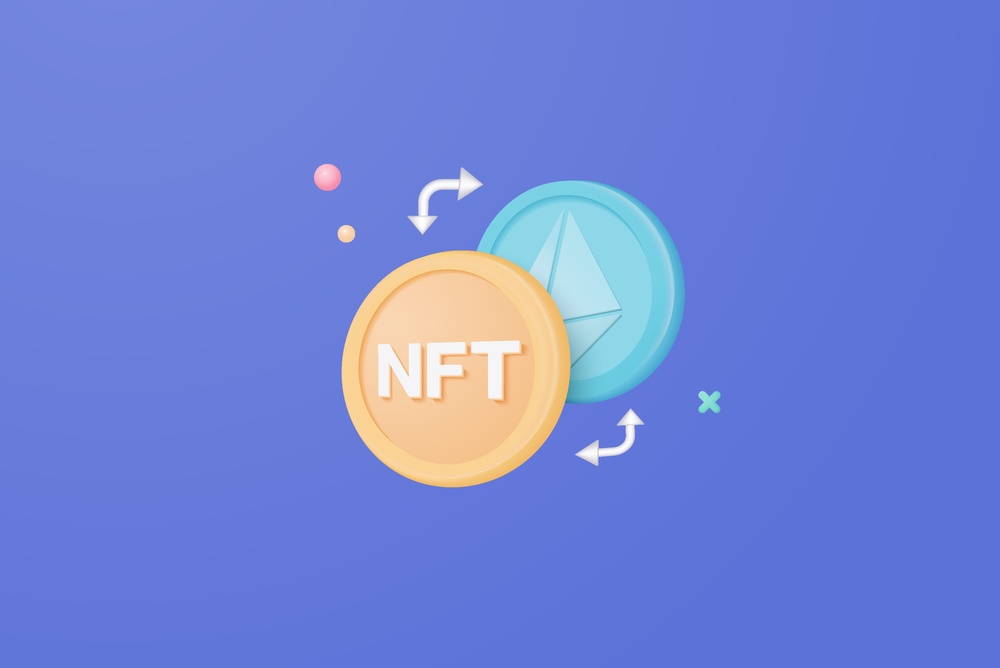
The larger picture of total profit from NFT sales can get somewhat complex. If you really want to look at the bottom line you need to account for a range of fees. There will be fees going from fiat to crypto, and back the other way for one thing. You pay an exchange fee to buy crypto, and an exchange fee to sell crypto, and those are just the start/finish of the entire flip process.
There will also be transaction fees during the lifespan of an NFT flip. Understanding crypto transaction fundamentals, things like GAS, is critical to successful NFT flipping. If you are not sure what GAS is, brushing up on some crypto and NFT basics (as mentioned in the beginning of the article) is probably a really good idea. If GAS costs more than your entire NFT project, you’re in for a bad time.
Then, when all is done and you made a profit (hopefully), you need to pay taxes to the government.
Tools For Advanced NFT Flipping
Along the journey to becoming proficient in flipping NFTs you’ll reach a point where power tools are warranted. When you reach that point you might consider one or more of these options.
- Nansen: https://www.nansen.ai/
- Dune: https://dune.xyz/
- Moby: https://moby.gg
- Icy Tools: https://icy.tools/
- Rarity Tools: https://rarity.tools
- Trait Sniper: https://traitsniper.com

Nathaniell
What's up ladies and dudes! Great to finally meet you, and I hope you enjoyed this post. My name is Nathaniell and I'm the owner of One More Cup of Coffee. I started my first online business in 2010 promoting computer software and now I help newbies start their own businesses. Sign up for my #1 recommended training course and learn how to start your business for FREE!

 Can You Really Make Money as a Professional Organizer?
Can You Really Make Money as a Professional Organizer?
Leave a Reply